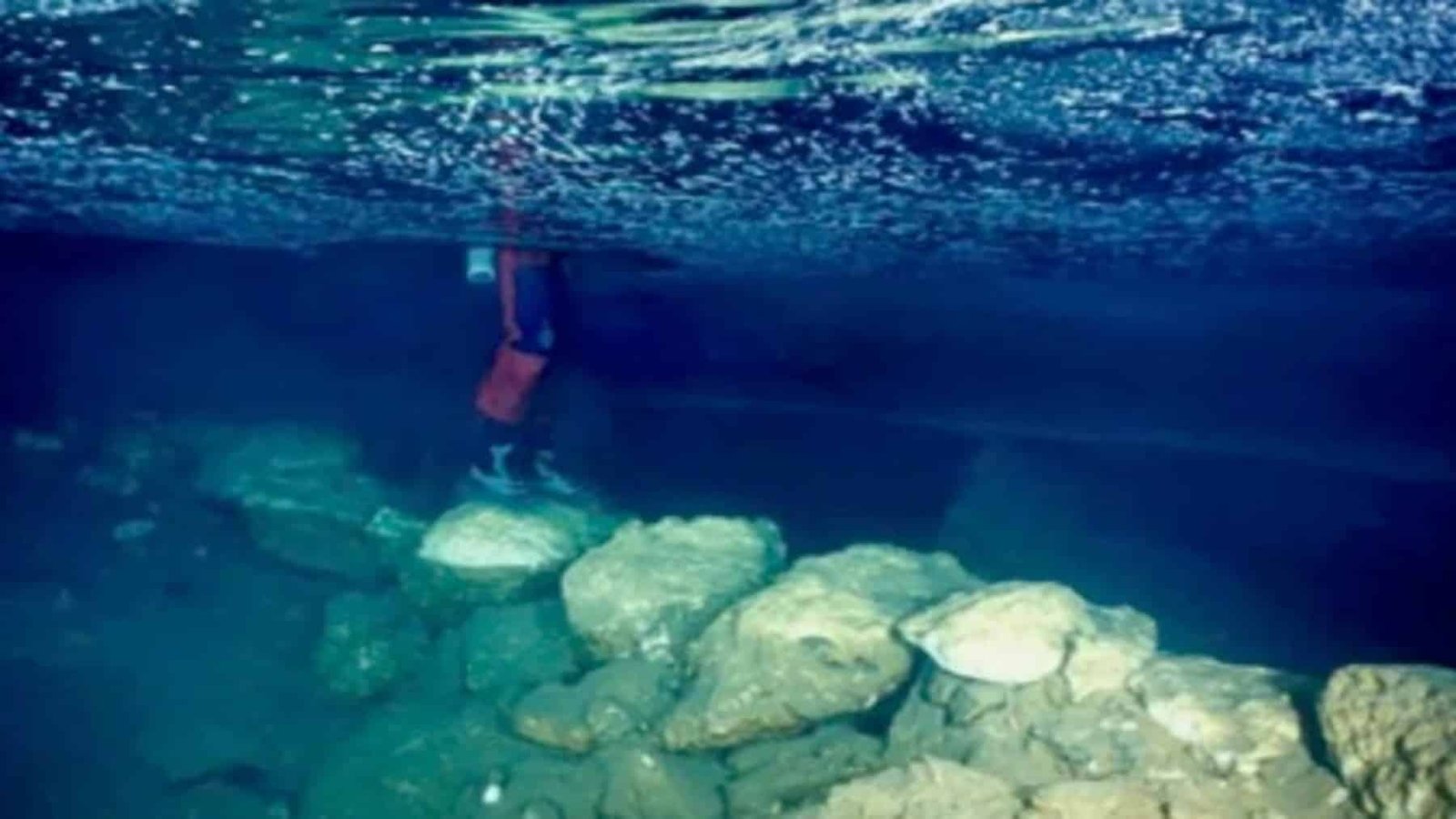A place that’s a staggering 5600 years old, submerged in the sea, has been discovered in Europe. This remarkable find completely changes our understanding of human arrival in Spain. The discovery of an old stone bridge in the Genoese cave of Mallorca, the main island of the Balearic archipelago, suggests that humans settled in the Western Mediterranean much earlier than previously thought.
## A stone bridge indicates the early arrival of humans to Spain
Archaeologists have made a groundbreaking discovery that will rewrite the history books. The old stone bridge, submerged in the Genoese cave, is a significant find that indicates humans arrived in the Western Mediterranean long before what was previously believed. This discovery will change everything we thought we knew about early human history in the region.
The question of when humans first arrived in the Western Mediterranean has baffled archaeologists for decades. As it turns out, this new discovery has shed some light on the matter. Logically, being so close to the continent, the first signs of human settlement should have been found in Mallorca. Instead, smaller islands further from the sea suggested that humans may have skipped this island.
## How did this old bridge find its way to the bottom of the sea?
The team responsible for the study, recently published in Communications Earth & Environment, explored the Genoese cave. As the sea level rose over the past 6000 years, the cave, now mostly underwater, has impressive and distinctive decorations, such as calcite sculptures. These formations, along with a light-colored band on the submerged bridge, serve as indicators to precisely track historical changes in sea level and date the construction of the bridge.
According to the study, a stone path and a wall descend to a bridge that once crossed an underwater lake. Built without mortar or cement, the study authors note that large blocks of limestone were stacked, and large flat rocks were placed on top, measuring up to 1.63 to 5.34 feet long. The ceramics from the naviform period, which date back to between 3550 and 3000 years ago, allowed researchers to deduce that the bridge was built prior to these artifacts.
## How early humans came to the islands
The latest evidence had placed the chronology of human arrival in the region at around 4400 years ago. However, the Genoese cave bridge has pushed this date back by 2000 years. While some findings, including bones and ceramics, could potentially expand the date to 9000 years ago, these discoveries are still theoretical due to inconsistencies and poor conservation of the material dated by radiocarbon.
Nevertheless, scientists can now confirm that humans were active on the island around 6000 years ago. By analyzing the mineral growth on the bridge and the elevation of a coloration band, they have reduced the temporal gap between the settlements of the eastern and western Mediterranean. The presence of this bridge has significant implications for our understanding of human history, and it’s a reminder that our ancestors left behind many secrets waiting to be uncovered.

